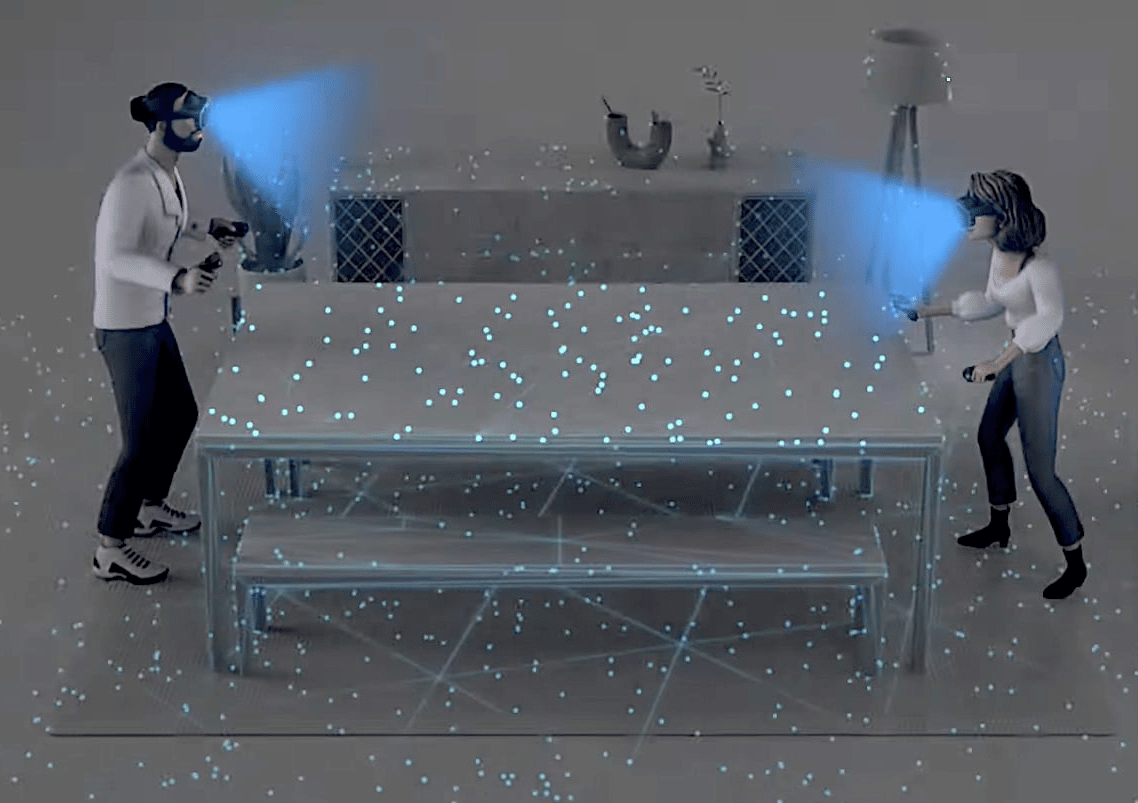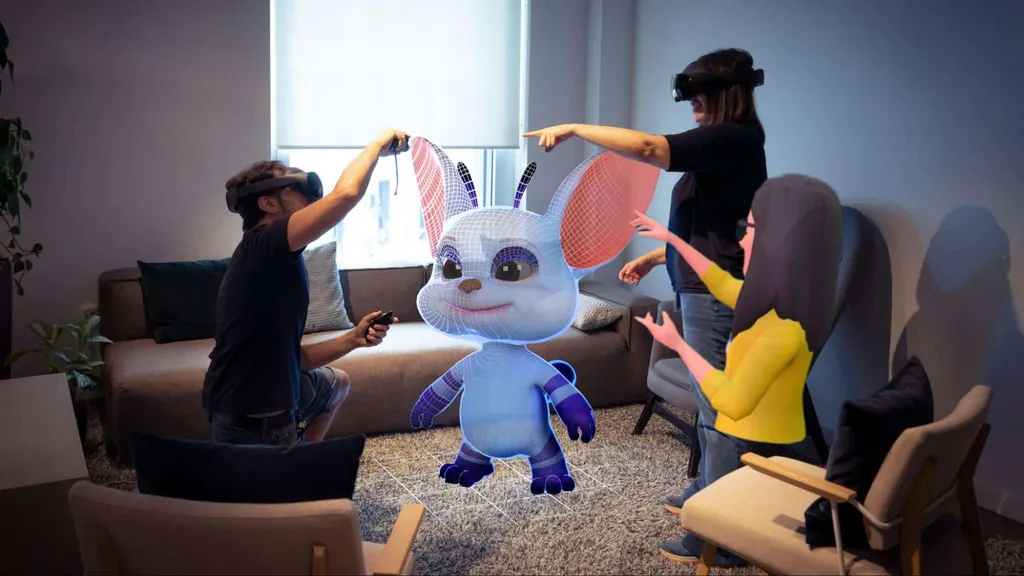Meta Quest Pro now supports shared-space colocation.
Colocation means having multiple headsets sharing the same physical play space with the same virtual coordinate space. Facebook showed off an “arena scale” prototype of this in late 2018, but no further development was shown since then. HTC’s Vive Focus 3 has supported colocation since last year, and it’s already being used in VR arcades.
Colocation should be particularly beneficial for mixed reality applications, so everyone sees the same virtual objects at the same location in the room.
To be clear, this feature will require developers to specifically support it. It’s called Shared Spatial Anchors, an extension of the existing Spatial Anchors feature that lets you place virtual content in a specific position in your room so it stays there the next time you use the app.
Camera-based markerless positional tracking systems generate a 3D point cloud by mapping high-contrast static features in your environment. To use Shared Spatial Anchors you need to enable ‘Share point cloud data’ in your headset’s privacy settings. This lets the point cloud be transmitted from your headset to other headsets via Meta’s servers. Meta’s software will find shared unique patterns in the point clouds of multiple devices and use them to align the virtual spaces.

For now, Shared Spatial Anchors is only supported on Quest Pro, but Meta says it will also come to Quest 2 “early next year”.




























